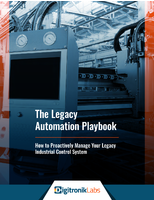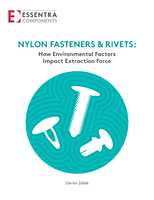Electron Beam Standard helps ensure fungus-free organic food.
Press Release Summary:
Use of electron beams for food purification is supported by national and international standards, and guidelines for research on this technology are provided in ISO/ASTM 51900:2002. Document covers minimum requirements for dosimetry and absorbed-dose validation needed to conduct research on irradiation of food and agricultural products. Standard gives guidelines to scientists who aim to establish quantitative relationship between absorbed dose and relevant effects in these products.
Original Press Release:
Standards for Electron Beams Help Ensure Fungus-Free Organic Food
Organic foods have become increasingly popular with diners worldwide. However, cultivated without artificial pesticides, these crops often succumb to funguses and diseases. A new practice developed with the help of standards uses electron beaming to prevent fungal spores and pathogens from growing on organic seeds.
Without the use of chemical pesticides, organic crops have long been vulnerable to certain funguses and other plagues that could damage or destroy plants, causing an undue financial burden on the farmer and an increase in produce prices for shoppers. A new treatment from the Fraunhofer Institute for Electron Beam and Plasma Technology uses accelerated electrons to strip seeds of fungal spores and pathogens. The microscopic beams destroy the chemical bonds that hold together the foreign molecules, essentially causing them to explode. The process can disinfect 200,000 seeds per second, making it a rapid and chemical-free way to assure that crops will not be diseased.
The use of electron beams for food purification is supported by national and international standards. Guidelines for research on this technology are provided in ISO/ASTM 51900:2002, Guide for dosimetry in radiation research on food and agricultural products. The document covers minimum requirements for dosimetry and absorbed-dose validation needed to conduct research on the irradiation of food and agricultural products, and gives guidelines to scientists who aim to establish a quantitative relationship between the absorbed dose and the relevant effects in these products.
This standard was originally developed by ASTM International, a member and audited designator of the American National Standards Institute (ANSI). The document was later adopted as an International Standard by the International Organization for Standardization (ISO) Technical Committee (TC) 85, Nuclear energy.
Another International Standard originally developed by ASTM outlines the installation, operational, and performance qualifications for irradiators that use electron beaming to treat food. ISO/ASTM 51431:2005, Practice for dosimetry in electron beam and X-ray (bremsstrahlung) irradiation facilities for food processing also includes information on routine processing and absorbed dosage in this practice.
Electron beams are also used for food products beyond seeds and plants. ASTM F1356-08, Standard Practice for Irradiation of Fresh and Frozen Red Meat and Poultry to Control Pathogens and Other Microorganisms, outlines procedures for the irradiation of fresh or frozen meat and poultry. Developed by ASTM, the standard is applicable to both pre-packaged product for retail sale and unpackaged product.
With advanced methods of treating seeds and food products for fungus, the future for safe and tasty organic food is secure for farmers and diners worldwide.
Food safety is an important issue for organic and non-organic foods alike. ANSI will spotlight the critical role that conformity assessment activities play in ensuring food safety in an upcoming event: Bolstering Consumer Confidence: Establishing Third-Party Certification Criteria.
Co-sponsored by ANSI, the event will be an engaging and interactive forum for suppliers, retailers, regulatory agencies and trade experts as they seek to enhance their food safety value proposition.
For more information, see the ANSI news item and event page.




